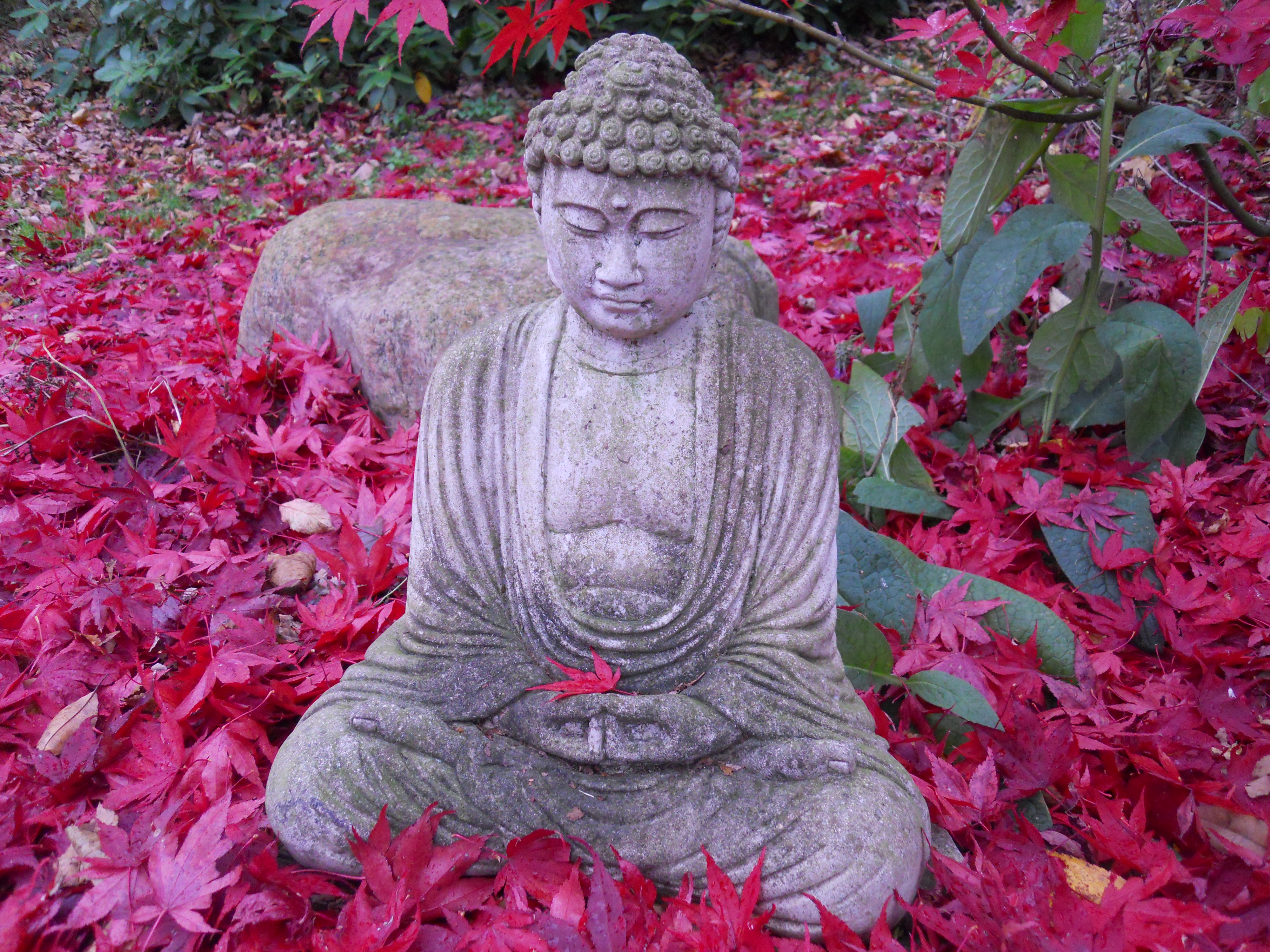How often do you feel plagued by a thought? Or you feel pushed around by an idea or image, as if it were a phantom bully, disrupting your concentration or making a moment of life, of school or work, more difficult? You begin to look more at the ghost that trails you than the people or events that face you. Especially in times like this, it can be difficult to find comfort and clarity.
One way to get free from an obsessive, painful or distracting thought is to center your mind on feeling a sensation. In this way you break the apparent chain of thought. Every time you stop reinforcing an old and hurtful habit and calm your mind, even for a second, you set your mind free and show yourself you can do it. Your mind stops rushing. You give yourself a moment’s respite and allow a new pattern to be created. Find a place safe and quiet enough so you can stop what you’re doing and close your eyes. You can be sitting or standing. And focus your attention on the air passing over your upper lip as you breathe out. Simply feel the air going out. Mind has only one object at a time. If you focus on feeling, you let go of thinking.
You can feel the temperature of the air as it passes over the upper lip, or whether the exhalation is smooth and deep, or choppy and shallow.
Then notice how your body automatically strives to open itself and take in air once again. Notice where you first feel the impulse to inhale and whether the impulse comes quickly or slowly. Then feel the air passing over your upper lip as you breathe in. Feel your whole body expanding, your belly, shoulders, and face as you return attention to the air entering through the nose.
Notice the pause between breaths. You get quiet. For a second, you are simply there. For a sweet second of life, all that is important is the simple enjoyment of life.
And then you want to let go of the air, and let go of tension. You settle into the sensation of letting go as you push the air out. If a thought does arise, congratulate yourself on being able to notice it. And then let it go by shifting your focus to the air passing out, over the upper lip as you exhale. Usually, what is most important is not what arises but how you respond. You become aware of the thought precisely in order to learn from it and let it go.
Breathe in and out through the nose. This is the cycle of a breath. When you are aware of it, you appreciate the simple, basic aspects of living. You are kinder to yourself.
If you are leading a group or class, first study and practice, daily, on your own, to know it from the “inside,” and possibly find a mindfulness teacher or counselor. You might give students a choice of where to focus, on the upper lip, on the shoulders, or on the bottom of your feet—focus wherever it is easier to focus. Focusing on the feet can be helpful for facing anxiety and fear as it helps you feel more grounded, or centered. You breathe out and feel your feet pressing down against the floor or earth as you push the air up, from your feet and out your nose. You focus directly on the breath and let everything else go. Then as you breathe in, feel the air enter your body and go all the way down to your feet. Feel your body expand slightly—your feet expand down, into the floor or earth.
Do this for three breaths, or three minutes, whenever you need it, or at a set time of day. Just a small investment of time can be significant. Start small and your body will ask for more.
You might feel that if you’re not rushed, you’re not important. In our society, it is easy to think the busier you look, the more important you feel. Being constantly connected to social media, for example, means people value you. The ping of the cell phone is an affirmation. So, especially for young people who grow up with digital media, being disconnected from technology or from busy-ness can mean to them they are less valuable or they are missing something. If you don’t fill each moment with tasks or texts or thoughts, you are wasting your time. But being connected to media often means being disconnected from yourself. You miss yourself. When you quiet your mind, you hear the world more fully and clearly.
Focusing on feeling is only one of many methods you can use. You can teach yourself to mindfully face uncomfortable emotions and question thoughts. If you turn away from feeling fear, for example, you let it rule. Usually, when you face something directly, you can break its hold on you. When you face what bothers you, you feel more powerful. Distraction is another technique many people use, reading a book, working out at a gym, or taking a walk in the woods when you want to “get out of your head” and back into the rest of the world.
To let go of a thought, it might also help to understand why you have thoughts. So study yourself. Thoughts are an expression of mind testing and abstracting from reality to create a viewpoint. The initial level of any mental state is what psychiatrist Dr. Daniel Siegel calls an “orienting response.” Brain and body systems become alerted and energized and you begin to feel. Then you get “elaborative appraisal” which involves activating memory, directing energy, and creating meaning. You feel bad, good, or neutral. You explain the world to yourself and you get the desire to hold, as in the emotion of joy or love, or push away, as in distaste or hate.
You might hold on to a thought in order to control what you feel can’t be controlled. You might worry about something occurring in order to magically prevent its occurrence. You might think your viewpoint is the absolute truth in order to prevent yourself from noticing how contingent and subjective a truth is. You might hold on to a thought out of fear of having nothing to hold on to.
When your mind quiets, you are more likely to directly notice the feeling that precedes thought. You can notice an idea without being caught by it. When you mistake the thought about an event or person as the entire story, you miss so much. When you focus on feeling, it shifts your perspective so you perceive and live more deeply the entire reality out of which the thought arises. You feel more centered and enjoy more fully the individual moments of your life. When the mind is calm, you act, teach, and learn more effectively.




